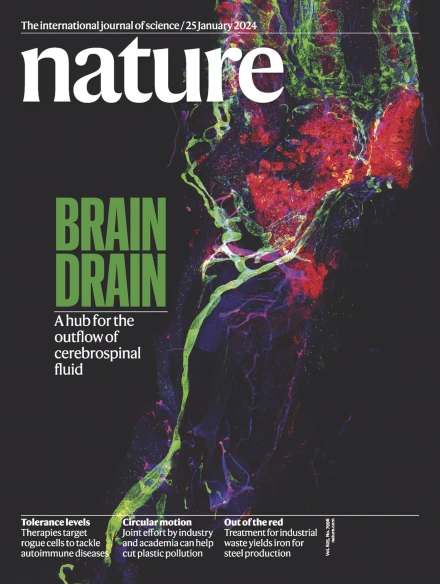看似静止的摩擦界面的滑动和愈合
IF 48.5
1区 综合性期刊
Q1 MULTIDISCIPLINARY SCIENCES
引用次数: 0
摘要
摩擦界面存在于从生物关节到地震断层的各种系统中。这些界面何时以及如何滑动是地球科学和工程中的一个基本问题1、2、3、4、5、6、7、8、9、10、11、12、13、14、15、16、17、18、19、20。人们认为存在一个临界值剪切力,称为静摩擦,低于此临界值界面是静止的4,10,尽管许多研究表明这一概念已经过时1,21,22,23,24,25,26,27,28。相比之下,速率和状态摩擦公式[1,26,27]预测界面总是滑动,但这一特征通常被认为是需要修改的人工产物[30]。在这里,我们表明,名义上静止的界面受到恒定剪切和法向载荷的作用,其驱动力明显低于已知发生蠕变的经典定义的静摩擦9,27,28,29,正在滑动,但速度越来越小,低至10 - 12 m s - 1。我们的精确测量直接在接口是由数字图像相关18,31,32。这种行为与经典的摩擦模型相矛盾,但证实了速率和状态摩擦的预测1,26,27。名义上静止的界面滑动率的减小反映了界面的愈合,这将在随后的滑动事件中表现为更高的峰值摩擦15,27,33,如地震和山体滑坡,大大改变了它们的成核和传播,从而改变了它们的危害3,12,13,34。本文章由计算机程序翻译,如有差异,请以英文原文为准。


Sliding and healing of frictional interfaces that appear stationary
Frictional interfaces are found in systems ranging from biological joints to earthquake faults. When and how these interfaces slide is a fundamental problem in geosciences and engineering1–20. It is believed that there exists a threshold shear force, called static friction, below which the interface is stationary4,10, despite many studies suggesting that this concept is outdated1,21–28. By contrast, rate-and-state friction formulations1,26,27 predict that interfaces are always sliding29, but this feature is often considered an artefact that calls for modifications30. Here we show that nominally stationary interfaces subjected to constant shear and normal loads, with a driving force that is notably below the classically defined static friction for which creep is known to occur9,27–29, are sliding, but with diminishingly small rates down to 10−12 m s−1. Our precise measurements directly at the interface are enabled by digital image correlation18,31,32. This behaviour contradicts classical models of friction but confirms the prediction of rate-and-state friction1,26,27. The diminishing slip rates of nominally stationary interfaces reflect interface healing, which would manifest itself in higher peak friction in subsequent slip events15,27,33, such as earthquakes and landslides, substantially modifying their nucleation and propagation and hence their hazard3,12,13,34. Digital image correlation measurements show that nominally stationary interfaces subjected to constant shear and normal loads are sliding at extremely small rates, confirming the predictions of rate-and-state friction formulations.
求助全文
通过发布文献求助,成功后即可免费获取论文全文。
去求助
来源期刊

Nature
综合性期刊-综合性期刊
CiteScore
90.00
自引率
1.20%
发文量
3652
审稿时长
3 months
期刊介绍:
Nature is a prestigious international journal that publishes peer-reviewed research in various scientific and technological fields. The selection of articles is based on criteria such as originality, importance, interdisciplinary relevance, timeliness, accessibility, elegance, and surprising conclusions. In addition to showcasing significant scientific advances, Nature delivers rapid, authoritative, insightful news, and interpretation of current and upcoming trends impacting science, scientists, and the broader public. The journal serves a dual purpose: firstly, to promptly share noteworthy scientific advances and foster discussions among scientists, and secondly, to ensure the swift dissemination of scientific results globally, emphasizing their significance for knowledge, culture, and daily life.
 求助内容:
求助内容: 应助结果提醒方式:
应助结果提醒方式:


